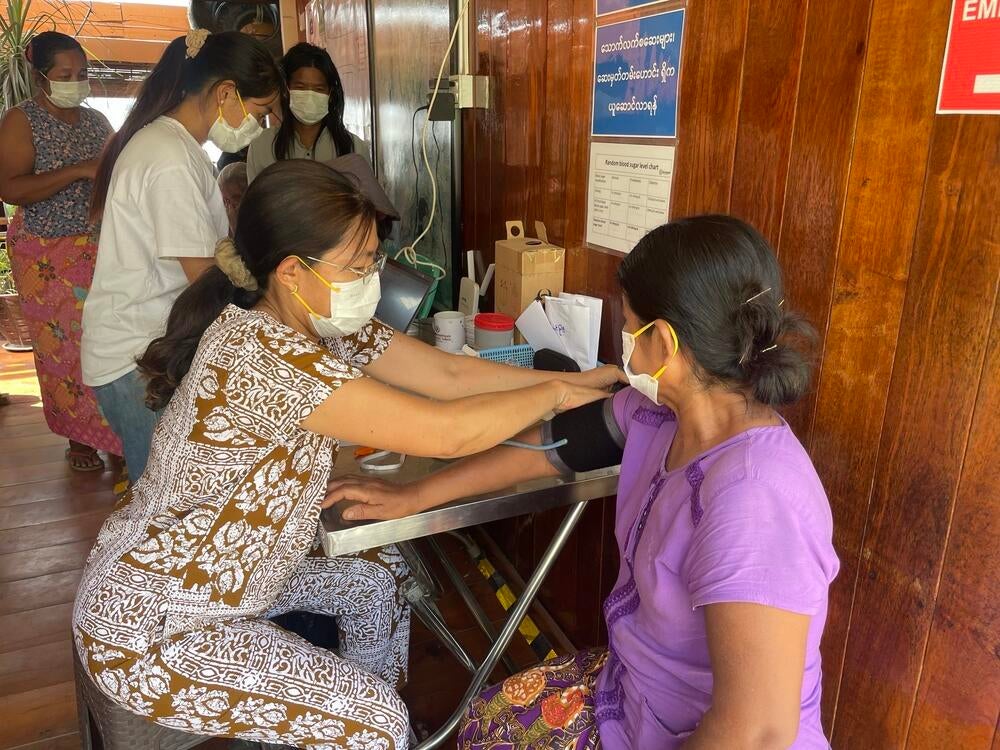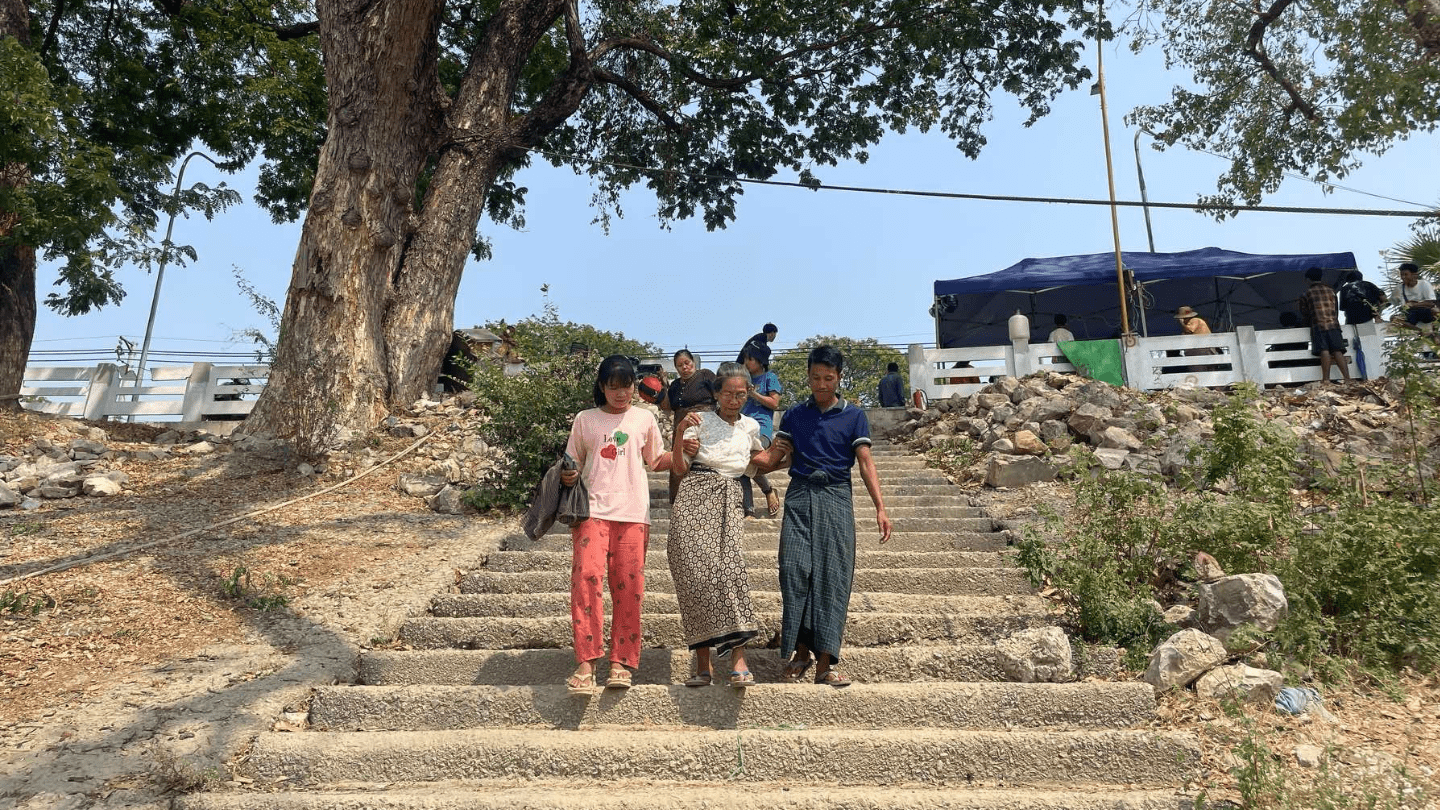MANDALAY, Myanmar— On March 28, 2025, a powerful 7.7-magnitude earthquake struck central Myanmar, devastating communities across Mandalay, Sagaing, and beyond. Homes crumbled, bridges collapsed, and essential services were brought to a halt. The disaster left thousands dead and injured, and countless others—especially women and girls—facing a crisis of survival.
When the earth shook violently beneath her feet on the afternoon of March 28, Than, 55, felt her world crumble around her. Like thousands of others, she stood helplessly, watching her neighbourhood collapse into chaos.
“I have lived here all my life, but I have never experienced anything as devastating as this earthquake,” Than says, her voice trembling. “Everything fell apart in seconds. We had nowhere to turn; every nearby health facility was damaged. The thought of needing medical help but having nowhere to go was terrifying.”
In the aftermath, Than and hundreds of her neighbours were left in a state of profound uncertainty. Many survivors—particularly women and girls—urgently required medical and psychosocial support. Medical supplies quickly ran short, and health facilities struggled to meet the overwhelming demand. Essential resources such as clean water, electricity, and access to care became increasingly scarce in the days following the quake. Roads were blocked, communications were disrupted, and hope was rapidly fading.
Then, a mobile health clinic arrived, reaching communities temporarily isolated by the earthquake.¹
Than recalls the moment vividly: “When I saw the mobile clinic opening, I felt relief rush through me. It truly saved our lives. The medical team treated us with such warmth and care, particularly women and girls who were traumatised by the disaster. For the first time since the earthquake, I finally felt safe again.”

Thida, 40, shares a similar story of fear and desperation. When her house started to tremble violently, she immediately fled with her family. They were safe, but many of her neighbours were not as fortunate—some remained trapped beneath the rubble.
“I couldn’t eat or sleep; the trauma was overwhelming,” Thida explains, her voice filled with emotion. “The mobile clinic staff welcomed us warmly. They treated everyone equally, making no distinctions. At that moment, I knew we weren’t alone. The clinic restored my hope and strength, allowing me to help others who needed support.”
Both Than and Thida's experiences reflect the broader reality faced by hundreds of thousands of women and girls in Myanmar following the earthquake. In emergencies, women and girls become disproportionately vulnerable, urgently requiring lifesaving health care, protection from gender-based violence, and mental health and psychosocial support.

Than and Thida's powerful testimonies highlight an urgent need for action: Women and girls affected by the earthquake desperately need continuous and dedicated support to recover and rebuild their lives.
“The earthquake shattered our lives, but help from the mobile clinic gave us hope and strength,” Thida concludes firmly. “Now we need this support to continue—not just for us, but for women and girls affected by the earthquake whose lives are counting on this critical aid.”
¹ The mobile clinic referenced in the story is operated by AFXB Myanmar with support from key donors, including UNFPA. These mobile health clinics are part of a broader humanitarian response providing critical services such as primary health care, sexual and reproductive health (SRH) services, gender-based violence (GBV), and mental health and psychosocial support (MHPSS) services. UNFPA and partners have also distributed dignity kits, clean delivery kits, and women's essential items to support women and girls severely affected by Myanmar’s earthquake.


